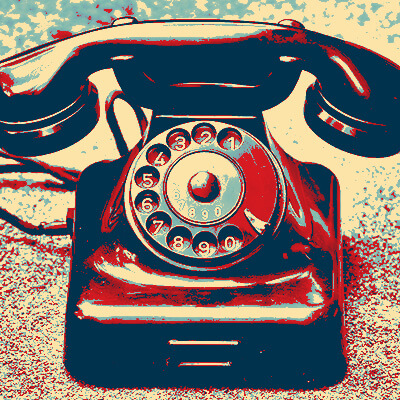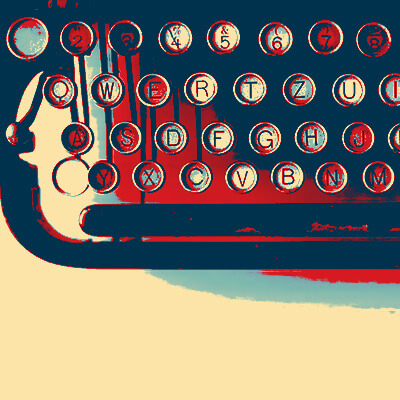My tech from GoovyTek has been terrific. He is patient, knowledgeable, and explains things really well. I enjoyed learning new tools and features on my smart phone and computer. They have made doing things a lot easier and more enjoyable.
Need Help? Call Us.
877.201.3586
Health In Technology: Tech Devices To Facilitate Health Needs

Health Gadgets: Health Monitoring & Testing Devices
Products that Monitor AFIB / Irregular Heart Rate
Apple Watch
The Apple Watch Series 4 is truly remarkable. A potentially life-saving feature we would like to highlight is the ability to take an electrocardiogram (ECG) test with the ECG app. An electrocardiogram test records the electrical activity of your heart. Doctors can then analyze that information to see if there are any irregularities in the heart rhythm, such as atrial fibrillation. In order to take an ECG test with your Apple Watch and ECG app, the first thing you should do is make sure that your iPhone is up-to-date with the latest version of iOS. You also need to know if your Apple Watch is running the latest version of watchOS. Next, open the Health app in your iphone and set up the ECG app. To take an ECG, you must be wearing your Apple Watch on your wrist. While resting your arms in your lap or on a table, hold your finger on the Digital Crown and wait for 30 seconds. The ECG app will then record the data from the Apple Watch’s built-in sensors. Then, it will let you know if your results are normal, or if there is an irregular heart rhythm detected.
AliveCor/Kardia
Another device and app that allows the user to take a medical-grade ECG is AliveCor/Kardia. This device is compatible with most iOS and Android smartphones and tablets. To take an ECG, simply open the app on your phone or tablet, tap “record,” place the device next to your phone, and put your fingers on the pads. In 30 seconds, you will receive your ECG results.
Glucose Monitoring
Diabetes is a medical condition in which the body has high levels of blood sugar over a prolonged period of time. According to the American Diabetes Association, over 30 million Americans (9.4% of the total population) suffer from this metabolic disorder. Diabetes is the 7th-leading cause of death in the United States -- it is a serious disease. Thankfully, Type 2 Diabetes (also known as “Adult-Onset Diabetes”) is both preventable and treatable with the proper diet, exercise, monitoring of blood sugar levels, and medication. As technology advances, so do the devices that allow you to manage this disease.
OneDrop
One interesting product we have been following is the One Drop Blood Glucose Monitoring Kit. This kit contains a Bluetooth blood glucose meter, lancing device, test strips, a personalized diabetes coaching program, and a mobile app for smartphones and Apple Watch. The mobile app receives and analyzes data from the meter wirelessly via Bluetooth and tracks glucose levels, medication, food, and activity. The app then creates a report for the user that can predict trends as well as notify you when a drop or spike in blood sugar levels occurs. Not only will the One Drop app monitor your glucose levels, it will also send you reminders to take your medication, assist with meal planning, and track your exercise routine. Although living with diabetes can be difficult, technology is helping to ease some of the burdens that people face in monitoring their sugar levels.
Hearing Loss
According to the National Institute on Deafness and Other Communication Disorders (NIDCD), hearing loss is one of the most common conditions affecting older people. Nearly 33% of the population between the ages of 65 and 74 have hearing loss, and that number jumps to 50% in people 75 and older. One of the major causes of hearing loss is presbycusis, or “hearing loss associated with the cochlear degenerative process of aging.” Learn More
People who experience hearing loss often experience a reduction in their quality of life. Communication difficulty can affect relationships, cause a loss of self esteem, affect one’s ability to work, create anxiety, and lead to depression. It can also be dangerous. People who experience hearing loss may not be able to hear an alarm, communicate well with doctors, hear the doorbell or telephone, or hear a siren while driving. Thankfully today, technology is leading the way in improving people’s hearing and quality of life.
A Brief History of Hearing Aids
Hearing aids have been around for a very long time. As early as the 1300s, people who suffered from hearing loss were fashioning horn-shaped devices to funnel sound into the ear. These primitive ear horns were originally made of hollowed-out animal horns or shells.
By the 18th century, people had begun using an ear trumpet for hearing assistance. These devices were made out of sheet metal or silver and were, as the name suggests, shaped like a trumpet. They were bulky and came in many shapes and sizes. They also did not work all that well, but were the only option available until the early 1900s.
The next step forward in the timeline of hearing aids came with the invention of the carbon microphone in the early 1900s. This was the first step in harnessing electricity, along with the telephone concept, to amplify sound to assist with hearing. Unfortunately, these devices did little to help people with severe hearing loss.
The 1920s to 1940s saw the invention of the vacuum tube. This hearing device was an improvement for people with more severe hearing loss. However, it was still very bulky and required a battery pack that attached to the person’s clothing or fit in their pocket with wires attached to the hearing device.
The 1950s brought us the invention of the transistor hearing aid. This is what many people had been waiting for. Analog technology allowed for a more discreet hearing aid that fit inside the ear or attached behind the ear. These types of devices were very popular and can still be found on the market today.
1980s - Present Day
It is an amazing time to be alive! We are witnessing an explosion in technology that will enhance the lives of those who suffer from hearing loss. Gone are the cumbersome hearing aids that sat behind the ear. Today’s hearing aids have sleek modern designs, come equipped with Bluetooth capability, and can connect to your smartphone.
So, what exactly is Bluetooth and how has it transformed hearing aids? Bluetooth technology allows computers, smartphones, and other devices to communicate wirelessly via short-range radio waves. Hearing aids with Bluetooth capability allow you to take a phone call, listen to the television, and stream music or other audio directly to your hearing aid while filtering out background noise. This technology even allows the wearer to personalize their hearing aids -- for example, you could program one hearing aid to stream music or connect to your smartphone, while the other hearing aid picks up sounds in the environment.
Industry leaders in hearing aid manufacturing have developed products that work with both Apple and Android phones. Today, using a smartphone app, you can control the settings and adjust the volume of your hearing aid from the comfort of your home. Phonak is one company that offers innovative and stylish hearing aid technology.
Client Reviews
My tech is patiently bringing me (at age 79) into the computer age. I am so glad that I found him through GroovyTek. What a wonderful gift!
Judy K
Dear GroovyTek team, I thank you from the bottom of my heart for this very supportive and beneficial service you provide! I am so grateful!
Loretta J
I had a serious issue with my bank website not being secure. This was a very technical problem. I used the Remote Session option to get help. My GroovyTek trainer kept at it until we finally resolved the issue.
Jeff W
I had a session with GroovyTek over the phone today. It was extremely helpful to me because I was able to see everything that he was doing on my computer as he was talking. I was then able to follow his actions to do what he was doing as well. What a way to go!
Carole M
The trainers are so friendly, and helpful. They certainly have lots of patience and knowledge. They make you feel so comfortable asking questions you would not dare ask your family to show you again how to do. They are always welcome in my home, sometimes I hate to see them go!
Debera F
GroovyTek did a great job! My trainer was on time, professional and she solved my slow computer. Great job, GroovyTek! I will use your services again.
Marcia F
A wonderful service in every aspect from calling in to set up an appointment with GroovyTek and follow ups as well as the fabulous help, patience and expertise of the tech who came to the house to work with me with my computer issues. I would highly recommend GrooveyTek for all your computer needs! Thanks so much!
Jean G
Excellent help from our GroovyTek trainer. He spent an hour explaining issues that I was confronted with, on my computer, and corrected all my issues and problems. He was concise, knowledgeable and forthright and I will call on him and GroovyTek again whenever I need help and support. I highly recommend GroovyTek services!
Laura M
I have always had the best computers that Apple offered, but the problem was that I never knew how to use them. Thanks to my GroovyTek trainer, my tech skills have increased exponentially and I am feeling more competent and confident with each lesson.
John B
Today was my first experience with GroovyTek and it was extraordinary. I learned so much over the course of the hour AND as importantly fixed the problem I was having. The trainer was intelligent and friendly. All support was given in a very collaborative way. I am looking forward to this partnership.
Barb S
I was so pleased to find GroovyTek. Although I am pretty tech savvy in some areas there are others where I need help. GroovyTek has helped me fill in that gap of information. I made an appointment to help me sync my devices and also help me learn how to organize my photos. The trainer was knowledgeable and able to explain things very clearly.
Natalie W
It is comforting to know if you have technical problems there is a Hands On source to get help. These trainers listen to your problems, find solutions and work with you until you understand the solution, their patience is outstanding. This is a great way to not only solve problems but to learn about the ever-changing world of technology; there are class presentations, small group gatherings or one-on-one in your home with kind, friendly, people.
Ingrid S
We have had several help sessions with a GroovyTek trainer. WE could not be more pleased. My trainer takes all our questions and while answering types up his answers so even after he leaves, we can refer to his notes. I would recommend GroovyTek to any of my friends or family without hesitation. BTW, ALL the employees at this firm are extrememly knowledgeable and friendly.
Tom D
Very impressed with my trainer’s ability to provide thorough explanations and demonstrations. I have confidence now in knowing how to manage my photos, videos, and documents. I received my money’s worth of valuable instruction.









